'Facing the challenge head-on': How Kentucky is trying to solve its veterinarian shortage
On a warm Kentucky summer day, roughly 20 people from across the state gathered in Frankfort.
They weren't there to rally or protest a bill. They were there to come up with solutions for a critical health and safety issue — the shortage of veterinarians in the state.
Across Kentucky, there are 257.9 million livestock animals, more than 200,000 horses, and thousands of household pets that demand the attention of the state's veterinarians. As of May 2022, only 1,160 licensed veterinarians were employed and working in Kentucky, according to data from the U.S. Bureau of Labor Statistics.
In 2022, the U.S. Department of Agriculture estimated at least 500 counties across 46 states faced critical shortages of veterinary care. In Kentucky, about 72% of the state is experiencing a critical veterinarian shortage.
"I think that the problem is that if we don't have sufficient coverage out there and something untoward was to happen, the economic and social impacts could be pretty significant," said Kentucky Department of Agriculture State Veterinarian Dr. Steve Velasco.
Outgoing Commissioner of Agriculture Ryan Quarles led the meeting of the Vet Shortage Working Group, which was initially formed in May 2022. This task force of veterinarians, producers, educators and other agricultural stakeholders from Kentucky spent 18 months working to find solutions for the veterinarian shortage plaguing rural Kentucky. The group is focused on the shortage of large or food animal veterinarians who tend to the state's cows, hogs, sheep and other animals raised on farms, often for the food supply.
The working group is focused on the salary-to-student-debt ratio for veterinarians, the rate of burnout, the need for a pipeline of vet school graduates heading to rural Kentucky, and ways to quickly identify and support students who may be interested in veterinary medicine.
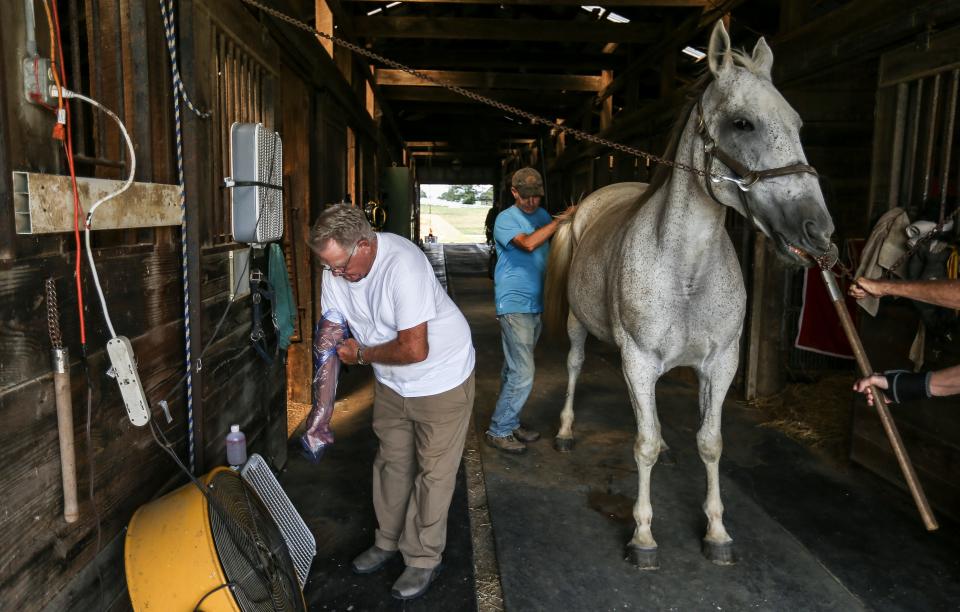
Nationwide, only 5% of veterinarians practice on large animals, and in Kentucky, it's even fewer with just 3% of all veterinarians having a dedicated large animal practice, according to the Kentucky Department of Agriculture.
The Problem: Where did all the veterinarians go? Shortage across Kentucky impacts pet owners, farmers
More: Kentucky has 15 practicing veterinarians over age 85. Here's why some are still working
There is not one easy solution here, Quarles said, "it’s going to take many different approaches and time to strengthen the availability of rural and food animal veterinarians in Kentucky."
Here’s a look at what it could take to slow and eventually reverse the veterinarian shortage in Kentucky.
Forgive student loan debt
Student loan debt is a major issue for veterinarians, with the average debt after graduation being around $200,000. In rural regions, where large animal vets are more likely to work across the commonwealth, some veterinarians are making less than $50,000 annually.
“It’s not a battery plant with 3,000 jobs, but it is an important professional service provider,” Dr. Cris Young, a professor of practice at Auburn University College of Veterinary Medicine, said during the working group's meeting in June.
Much of the future of large animal veterinary medicine in Kentucky is dependent on making the field desirable and attainable for people who may be interested.
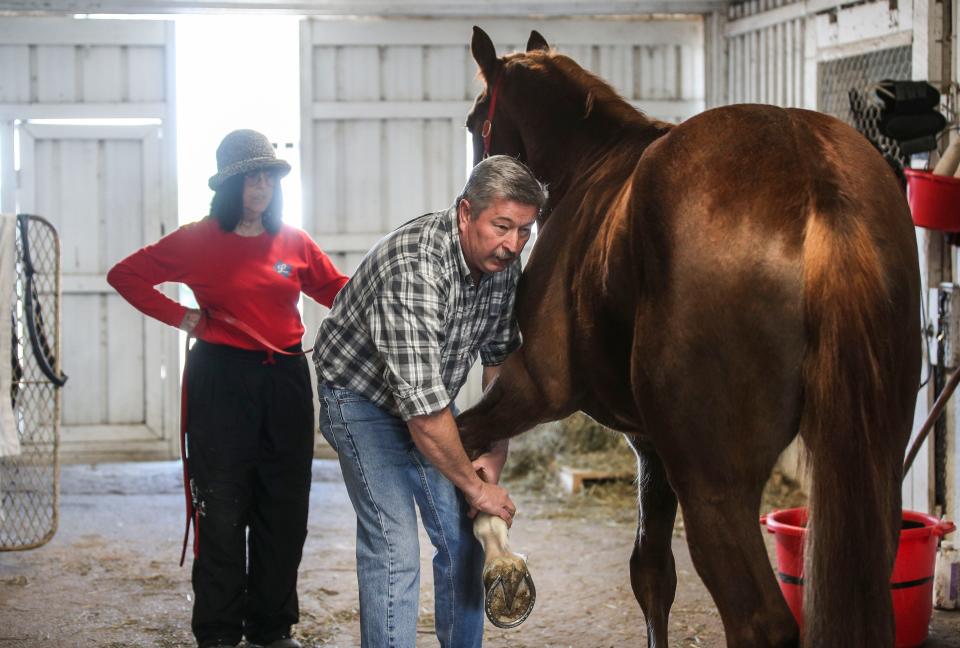
One potential solution for Kentucky is to enact a student loan forgiveness plan that places requirements on the participants to practice in rural areas identified as in need of veterinary care.
“There’s conversations around a loan forgiveness program that the [agriculture] development board would fund over the next two years so that we could stand that up as early as 2024, prove that it works, then ask the General Assembly to fund it from that point on,” Keith Rogers, the Kentucky Department of Agriculture chief of staff and Vet Shortage Working Group member, said in a Nov. 1 task force meeting.
Both teachers and nurses have similar programs lined up through the state, with commitments if they “teach at least five full years in a low-income school in an eligible district” or are “a registered nurse and agree to work full time for at least two years in a critical shortage facility."
While the federal government has a couple of aid programs to help veterinarians afford to stay in the field, particularly in rural areas that struggle to attract and retain large animal practitioners, the programs cannot provide funding to every veterinarian or geographic area in need.
Reduce burnout, compassion fatigue of young vets
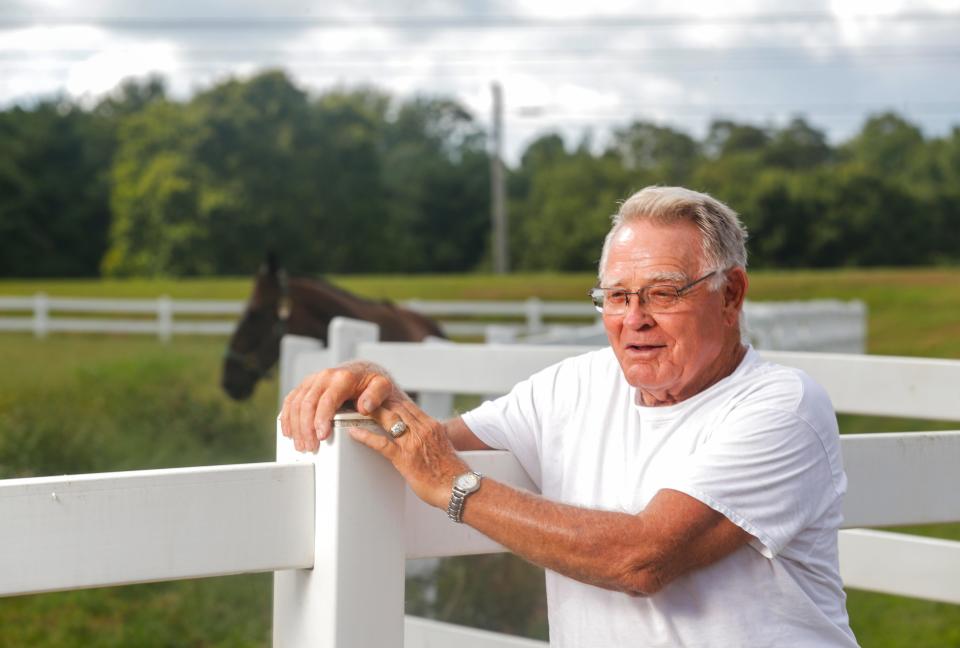
Nearly 40% of Kentucky's veterinarians are within 10 years or less of retirement age. The oldest practicing vet in the state is 93, according to the state agriculture department.
On top of the physical demands, veterinarians often face compassion fatigue, being on call nearly 24/7, and high stress from clients who want their animals to receive quicker and cheaper care.
According to American Medical Veterinary Association statistics, one in six veterinarians has contemplated suicide. A report released in 2020 by the AMVA in partnership with Merck Animal Health, showed veterinarians are nearly three times more likely than the general public to die by suicide, the Wisconsin State Farmer, part of the USA Today Network, previously reported.
“If we don’t address the primary sources of burnout, we’ll never fix the problem itself — no matter how many new veterinarians or veterinary technicians we add to the workforce,” a 2021 AVMA report said.
Provide Kentucky students with veterinary medicine programs
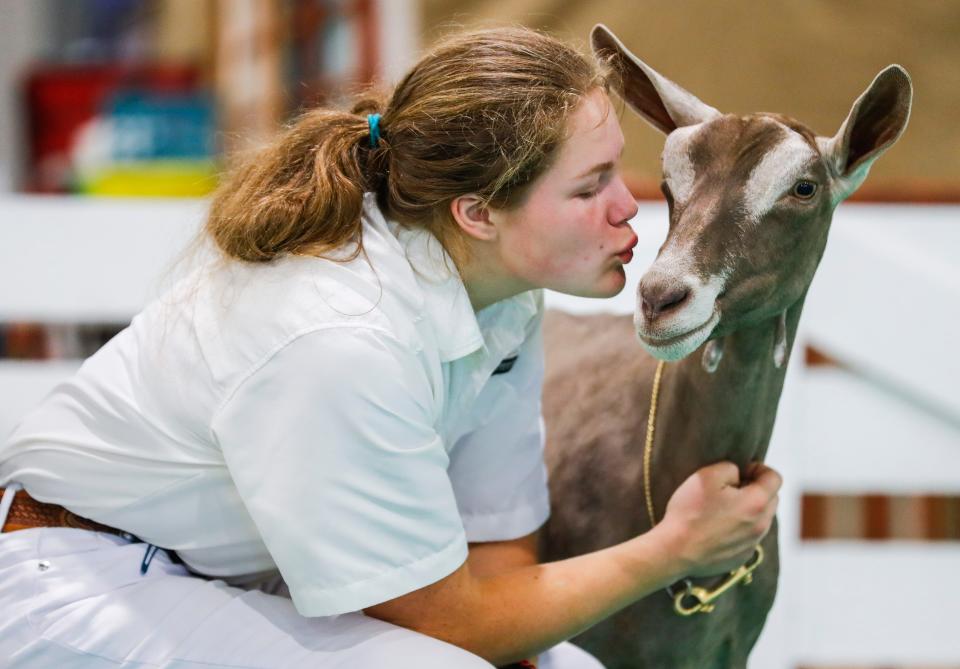
Murray State University hopes to help solve the shortage. In August, the university announced its intent to "examine the statewide shortage of veterinarians and work toward the development of a School of Veterinary Medicine."
Once completed, this school will be the first in Kentucky. Annually, 41 Kentucky students are accepted to veterinary medicine programs at out-of-state schools, Auburn University and Tuskegee University, where the state has partnerships.
“Statistics indicate that there are an insufficient number of veterinarians to meet the growing needs both within Kentucky as well as nationally,” Murray State University President Robert Jackson said in an email to The Courier Journal. “Further, we have a responsibility to address this increasing shortage of veterinarians in the commonwealth, coupled with ensuring that our prospective pre-veterinary students are able to locate a veterinary school to attend since all Kentucky students must go out of state today. ... We have a tremendous obligation to continue to identify needs and create opportunities for our region and the Commonwealth of Kentucky.”
Currently, there are 33 accredited veterinary colleges in the U.S. In a 2006 publication of the Journal of Veterinary Medical Education, researchers forecasted an increasing shortage of “academic food-animal veterinarians,” or veterinarians employed by academic institutions, would “amplify shortages wherever food-supply veterinarians are needed.”
Murray State University Hutson School of Agriculture Dean Dr. Brian Parr anticipates costs in Kentucky "will be over $100 million" to build and complete the school.
Parr is confident the new veterinary school will be of benefit not only to the veterinary industry but to interested students in Kentucky. According to a release from Murray State, the Hutson School of Agriculture has the largest estimated pre-veterinary medicine and veterinary technology enrollment of any Kentucky university and is one of only three AVMA fully accredited programs in the state.
Parr said when combining the pre-veterinary and veterinary technology students, there are currently more than 400 students in those two majors, noting the campus is seeing a growing interest in these fields.
"There's no doubt that the critical need is there," Parr said. "That demand is there obviously from our students that are looking to pursue veterinary medicine as a career, too."
Parr said the new vet school will be rooted in a "distributed education model," which calls on clinics and veterinarians in the state to provide internships for veterinary students. This approach is also more cost-effective and will prevent the university from needing to build a veterinary teaching hospital.
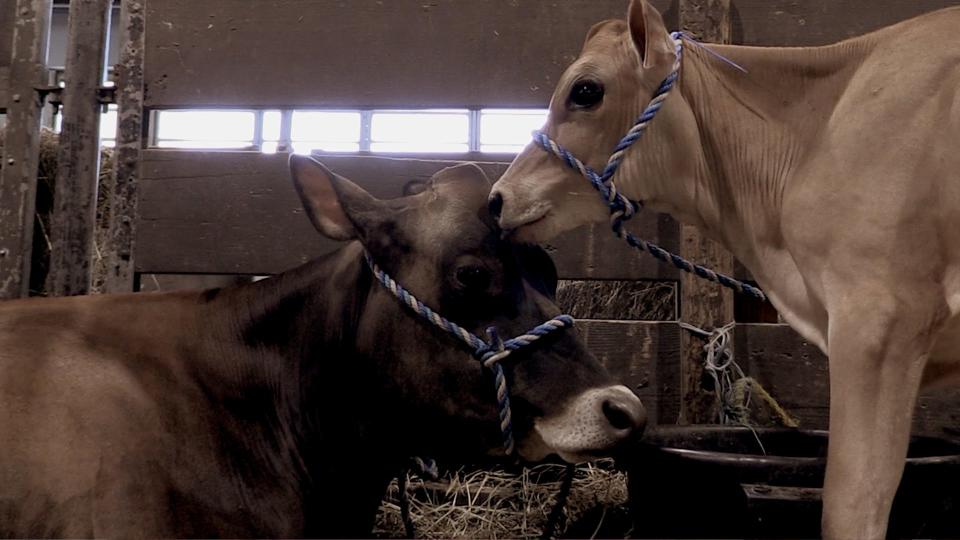
Parr said the timing of the proposed vet school is crucial for Kentucky because the state is expecting large dairy cow operations to move into Western Kentucky within the next few years, with at least one of these operations bringing in another 5,000 cows.
"We're in desperate need of large animal veterinarians, and we feel that is going to increase as we see these dairy herds come back to our state," Parr said.
To ensure Kentucky students interested in becoming a veterinarian have a pathway to vet school before the Murray State school opens, the task force will lobby the General Assembly to expand the number of seats the state pays for at out-of-state vet schools. The University of Georgia is offering Kentucky 10 seats for students starting as early as the fall 2024 semester, and Lincoln Memorial University is also working on a proposal to provide Kentucky students with spots at its vet school in the future.
It will be up to the state legislature during the 2024 General Assembly, which will review and approve a state budget, to accept or decline the seats offered in Georgia.
The state has been retaining in-state tuition levels for aspiring vet students at Auburn for 72 years, and the task force believes by further expanding seats at the Alabama-based university or other vet schools, more students will have a chance to become veterinarians and hopefully return home to Kentucky.
Other possible solutions for the state's vet shortage
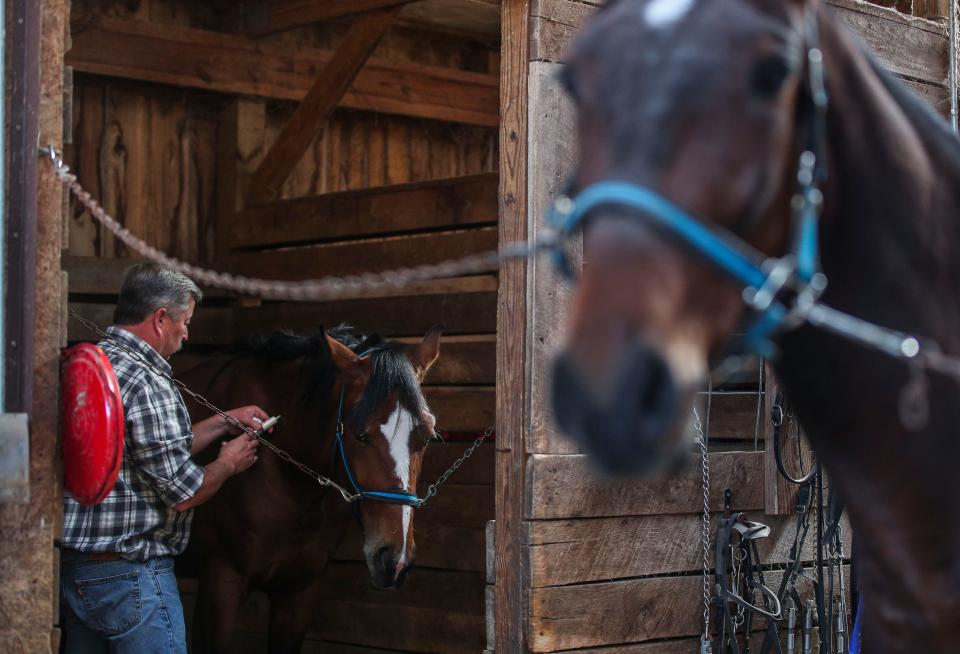
In a Nov. 28 meeting in Frankfort, the Vet Shortage Working Group presented a 25-page draft with formal proposals and recommendations for the industry, many of which will require legislative action. The draft, which was unanimously passed, will be available online by mid-December and will be given to leadership in the Kentucky General Assembly in 2024.
Here are some of the proposals from the working group:
Start the veterinary recruitment pipeline sooner and grow Kentucky agriculture programs for educating primary and secondary school students about veterinary medicine.
Create state-funded student-loan forgiveness plans through the General Assembly for veterinarians in rural Kentucky.
Kentucky's agricultural leadership and organizations will assist in the development and funding for preceptorship and externship programs to provide students an opportunity to work in rural Kentucky during veterinary school.
Provide statewide systems of financial literacy training and mental health support to aspiring vet students while also securing sustainable funding for students to prevent financial barriers and assist in wellness.
Have state agriculture leaders assist with connecting and transitioning the new veterinarians in the rural Kentucky community they will serve via local outreach, veterinarian organizations and agricultural producers.
Recommend the state expand business support for rural veterinarian clinics, including the potential development of a tax credit program to incentivize a retiring vet to sell their practice to a young, independent veterinarian.
In 2022, the state compiled its first set of comprehensive data on licensed vets, which pointed to the severity of the vet shortage and initially spurred the creation of the Vet Shortage Working Group. By June 30, 2025, the state plans to have all veterinary facilities registered with the Kentucky Board of Veterinary Examiners.
"A key factor in understanding shortages is having good data on available services to inform decisions about programming," the draft stated.
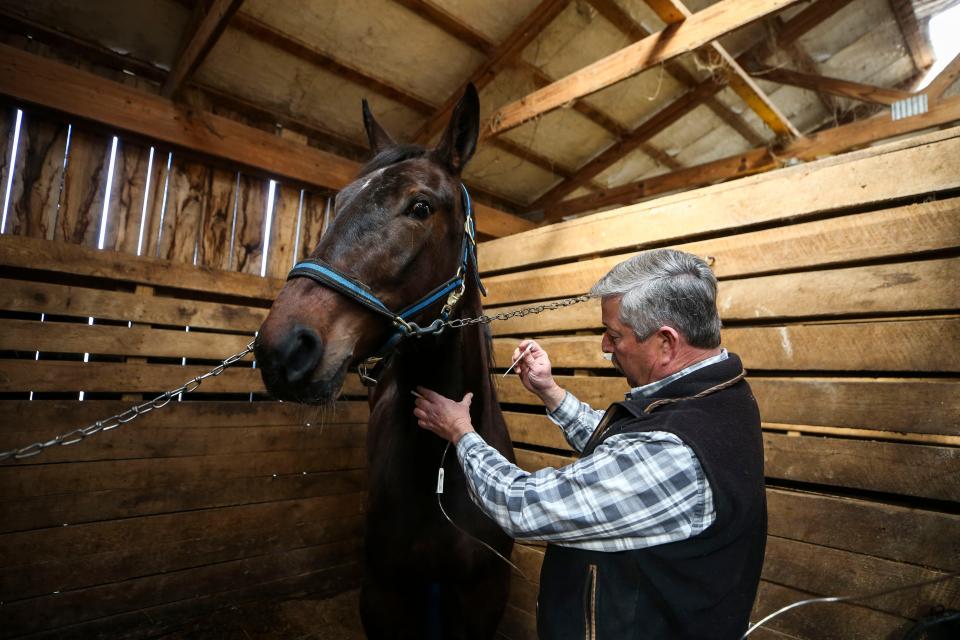
“This shortage of large animal veterinarians is not just a Kentucky issue, it’s something we’re facing nationwide,” Quarles said in a June statement. “But in Kentucky, we’re one of the few states who are facing the challenge head-on by creating this task force to look for solutions.”
Contact business reporter Olivia Evans at oevans@courier-journal.com or on Twitter at @oliviamevans_.
This article originally appeared on Louisville Courier Journal: Vet shortage in Kentucky: How the state plans to solve the issue

